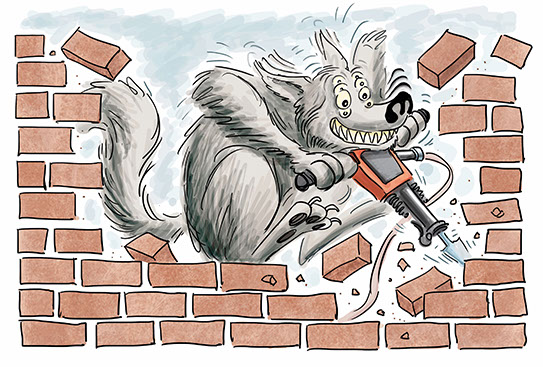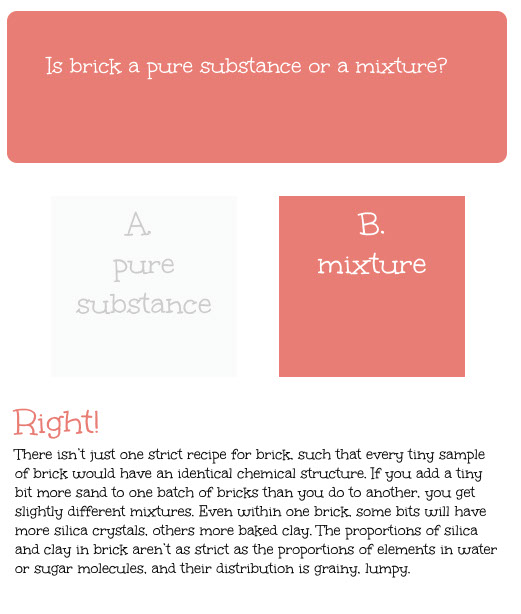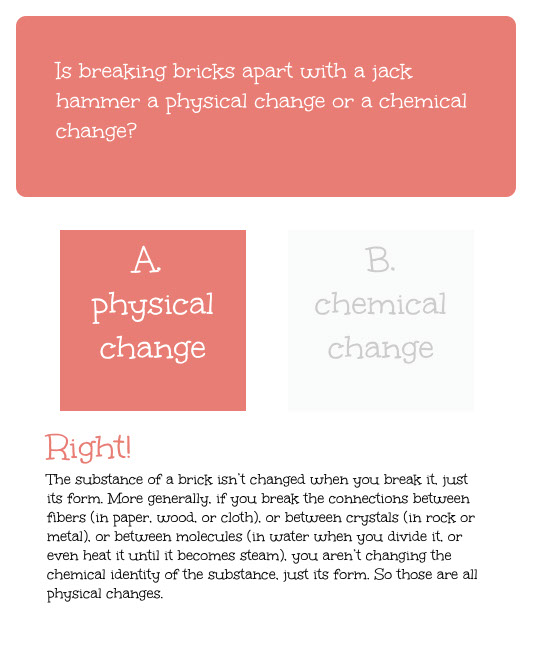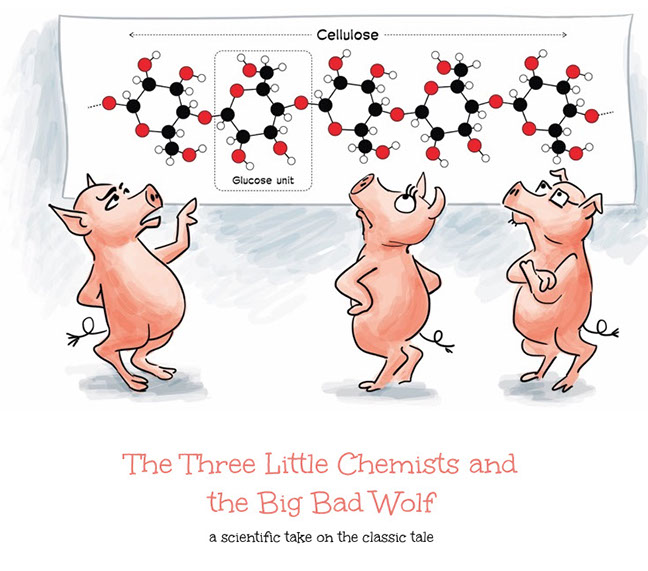SciGen Teacher Dashboard
Unit M3
Close-up Look at Change
Concentrating on Pink Lemonade
Categories of Chemicals and Mixtures
Condensation and Evaporation
Describing Physical and Chemical Change
The Three Little Chemists and the Big Bad Wolf
 Interactive Reading: The Three Little Chemists and the Big Bad Wolf
Interactive Reading: The Three Little Chemists and the Big Bad Wolf
Duration: Approximately 50 minutes
This short tale about the three little chemists and the big bad wolf reinforces the main ideas in this unit, including physical change (as opposed to chemical change); mixtures; and density.
Teachers may turn the reading into a Science Scene by assigning the following roles.
- Narrator (anything not in quotations)
- Professor Bacon
- Doctor Swineberg
- Mr. Spork
- Big Bad Wolf
Or teachers may assign the reading to small groups of five, assigning roles as above.
Some teachers will enjoy reading the story aloud—changing voice for each character.
An assessment relating to the story and the science concepts concludes the activity.
LEARNING OBJECTIVE
Students will apply the concepts of physical change, chemical change, mixtures, and density to the familiar story of Three Little Pigs (er... Chemists)
Materials (one per student or group)
- optional: electronic device (such as computer, laptop, tablet) to use the interactive elements, if not looking at them as a class
Teacher Tune-ups
Teaching Notes
ACTIVITY OVERVIEW
- Set the context (10 minutes)
- Engage with the story (20 minutes)
- Assessment (20 minutes)
Set the context (10 minutes)

Ask students summarize what they have heard about the classic story of the Three Little Pigs. Have students summarize the what they recall of the story. Be sure to mention that the pigs built increasingly sturdy structures because the wolf kept blowing their houses down!
Ask students to stack up a few miscellaneous objects on their desk and then knock them over in any way they choose (bumping table, blowing them down, and so on).
Have them turn and talk to consider whether the change they set in motion was a physical or a chemical change.
:
Physical
Engage with the story (20 minutes)
The story is "interrupted" with five questions students answer in order to continue. Copies of the questions and answers are shown on the right.





Question
1
Question
2
Question
3
Question
4
Question
5
Assessment (10 minutes)
The questions on the right may be used as an assessment or to prompt a class discussion.
:
In your own words, explain the difference between physical change and chemical change. Give an example of each from the story.
- A physical change is when something stays the same substance, but it changes form. So if an object is broken or torn, like the straw lab in the story, that’s just a physical change. But if a substance changes, down at the level of how its atoms are stuck together, then it’s a physical change. When the wood lab burns, that’s an example of a chemical change, because the wood changes so that it’s not wood anymore.
Do mixtures always have to be in liquid form? Are there any examples in the story to help explain what a mixture is?
- Lots of mixtures are liquid, but they don’t have to be. Concrete would be a mixture, because it’s got pebbles in it, but also cement holding it together. The bricks in the story are like that. They’re made with baked clay but with sand mixed in, and maybe lime. If you look very closely at a brick, you can see different substances. And they don’t have to be combined in exact proportions.
If you could explain lighter-than-air travel to the wolf, how would you explain it?
- The air inside a hot air balloon expands when it gets hot, so some of it gets pushed out of the bottom of the balloon. That means there is less air inside the balloon, and that makes it less dense than the air outside. So it floats up, kind of like a bubble floats up in water. And it’s so much less dense that it can lift the basket and passengers, even though they’re heavier than air.
Assessment
In your own words, explain the difference between physical change and chemical change. Give an example of each from the story.
Do mixtures always have to be in liquid form? Are there any examples in the story that help explain what a mixture is?
The story ends with this sentence:
But his voice was lost in the wind, leaving the confused, hungry wolf dancing with anger on the ground, unenlightened about density and the process of lighter-than-air travel.
If you could explain lighter-than-air travel to the wolf, how would you explain it?
BETA Version - Please send comments and corrections to info@serpinstitute.org
